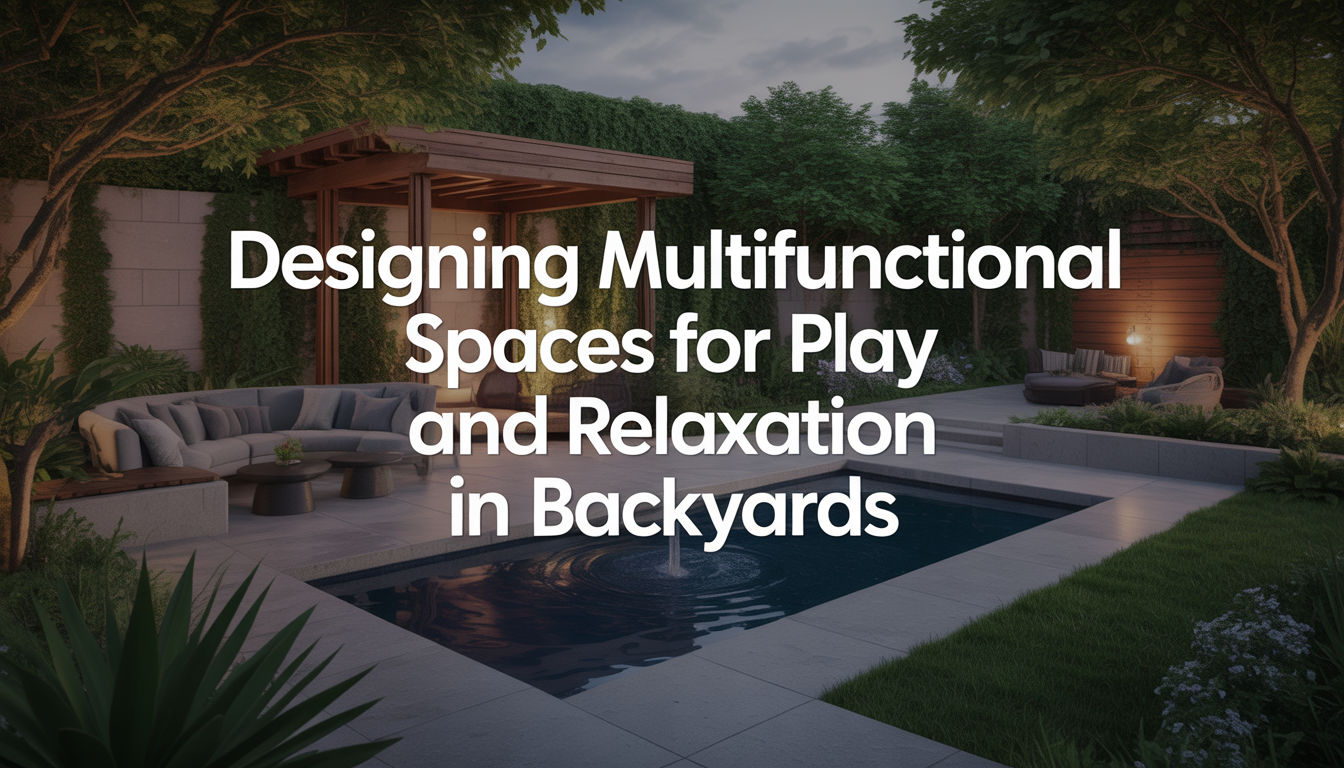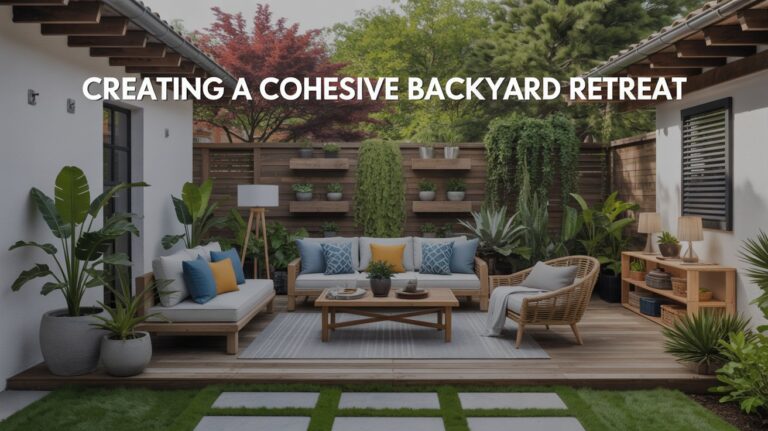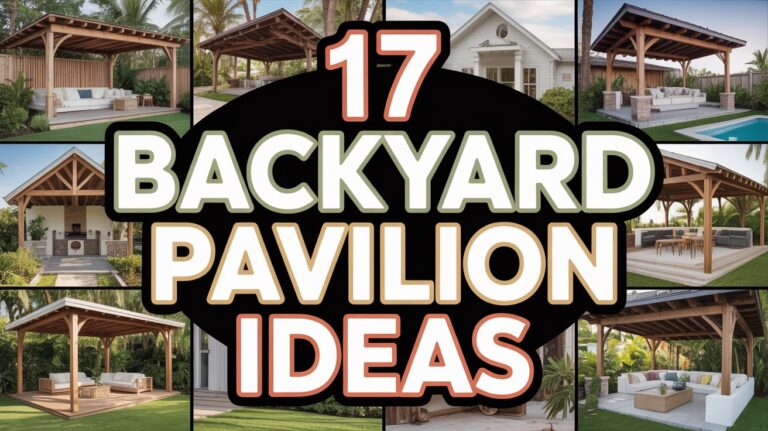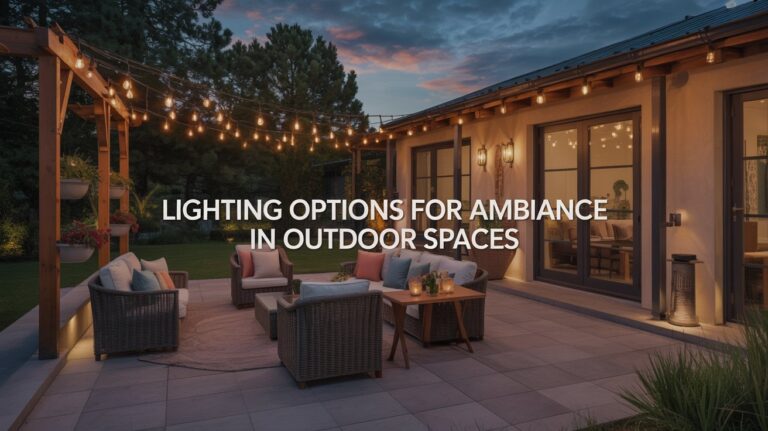Designing Multifunctional Spaces for Play and Relaxation in Backyards
I have been, or can be if you click on a link and make a purchase, compensated via a cash payment, gift, or something else of value for writing this post. As an Amazon Associate, I earn from qualifying purchases. Please read my full Affiliate Disclosure for more information.
Design multifunctional backyards by clearly zoning for play and relaxation, then connect zones with sightlines, textures, and cohesive color registers. Prioritize durable, kid-safe surfaces—impact-resistant pavers, porous concretes, and non-slip finishes—while using soft edges and low-maintenance plantings to reduce upkeep. Incorporate shaded retreats with movable seating and modular planters, plus a compact water feature for year-round sensory appeal. Storage should be weatherproof and integrated to preserve safety and sightlines. If you keep exploring, you’ll uncover practical steps and layouts.
Key Takeaways
- Delineate zones for play, dining, and relaxation using sightlines, materials, and lighting to preserve function and cohesion.
- Prioritize durable, kid-safe surfaces (impact-absorbing pavers, porous concretes) with good drainage and low-slip textures.
- Integrate shade structures and movable seating to adapt layouts for different activities and seasons.
- Include a compact water feature and sensory elements, with quiet pumps and seasonal maintenance to avoid algae and corrosion.
- Use modular storage and planters to maintain organization, sightlines, and easy access across all zones.
Creating Distinct Play and Relaxation Zones
Creating distinct play and relaxation zones requires deliberate zoning that preserves function without visual chaos. You’ll map activities to purpose-built areas, ensuring circulation paths won’t intersect active play with resting spaces. Use sightlines, materials, and lighting to define boundaries while maintaining cohesion. Garden lighting becomes a subtle coordinator, guiding movement and mood without overpowering scenes. Outdoor dining areas should sit close enough for social flow yet separated from active play zones to reduce incident risk. Choose durable textures, weathered tones, and plant screens to soften progressions. Documented standards support safety, accessibility, and maintenance, delivering a balanced, aesthetically intentional backyard that adapts over time.
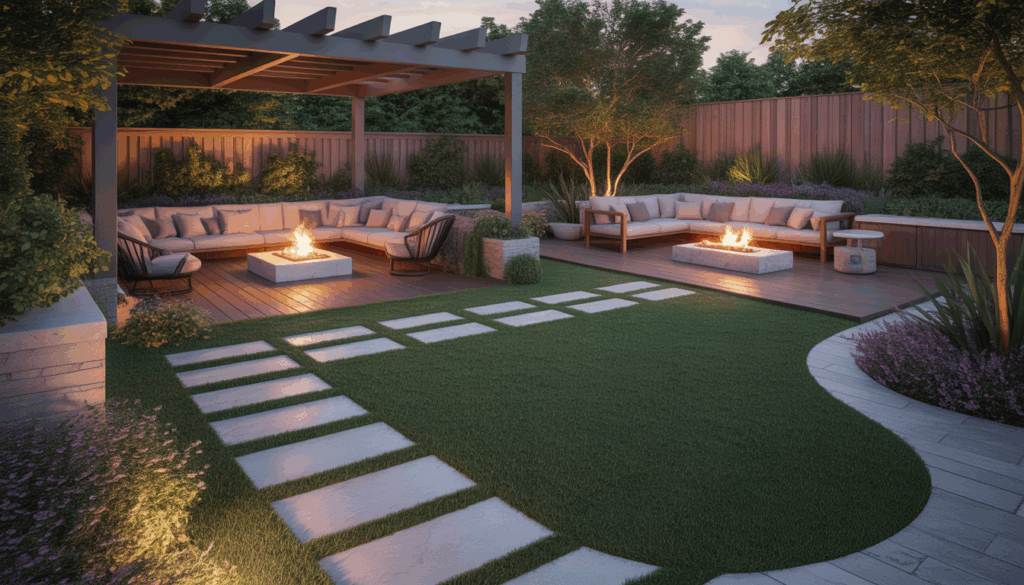
Selecting Low-M Maintenance, Kid-Safe Surfaces
You’ll want surfaces that balance durability with safety, reducing maintenance while supporting active play. Consider materials that are non-toxic, slip-resistant, and easy to clean, so kid-friendly use stays consistent over time. By prioritizing low-maintenance, kid-safe choices, you create a resilient foundation for both play and relaxation.
Low-Maintain Surfaces
Low-maintenance surfaces are essential for practical backyard play and relaxation areas, balancing safety, durability, and aesthetics. You’ll evaluate materials by impact resistance, drainage, and ease of cleaning, aligning choices with artistic landscaping goals and seasonal plantings. Consider performance, cost, and maintenance cadence to sustain color, texture, and safety year-round.
1) Choose impact-absorbing pavers or rubber铺? (clear: rubberized tiles)
2) Favor porous concretes or gravel for drainage and weed suppression
3) Select low-slip finishes with consistent texture underfoot
4) Pair with resilient ground cover that reduces wear without heavy upkeep
Kid-Safe Choices
When selecting kid-safe, low-maintenance surfaces, prioritize materials that cushion impacts, resist wear, and simplify cleaning without compromising aesthetics. You’ll evaluate shock absorption, uniform textures, and edge safety while balancing overall footprint. Choose resilient, low-maintenance options that tolerate weather and heavy use, then confirm color stability and stain resistance for long-term clarity. Integrate outdoor lighting to ensure safe circulation and visibility after dark, and coordinate surfaces with plant selection to minimize debris transfer and optimize microclimates. Prioritize modularity for seasonal rearrangement, and document maintenance routines to sustain performance, appearance, and child-safe standards across your backyard design.
Designing Shaded Retreats With Comfortable Seating
Shade is the deciding factor in comfort, so design shaded retreats that balance sun protection with visual openness to the yard. You’ll optimize form, function, and placement to create inviting, durable seating zones.
- Assess sun path and wind flow to position shade structures for consistent comfort.
- Pair weathered wood or powder-coated frames with cushioned, quick-dry fabrics for longevity.
- Integrate outdoor lighting and privacy screens to enhance ambience and enclosure without crowding sightlines.
- Align seating with focal views and easy egress, ensuring accessible storage and clear circulation.
Smart Storage Solutions for Outdoor Toys and Gear
Smart storage solutions for outdoor toys and gear must balance accessibility with protection, so keep everything within reach yet out of sight when not in use. You’ll implement a system that prioritizes durable materials, weather sealing, and organized access points, enabling quick retrieval without compromising aesthetics. Analyze stackability, bin labeling, and modularity to minimize clutter while enhancing usability. Innovative storage should integrate with site lines and landscape features, preserving sightlines and safety. In practice, outdoor organization relies on airtight seals, ventilated compartments, and low-maintenance finishes that resist fading. This approach delivers reliable, scalable protection with unobtrusive elegance.
Flexible Layouts: Movable Seating and Modular Planters
Flexibility in seating and planters enables you to reconfigure social zones quickly, balancing play and rest with minimal disruption. Movable seating esssentials and modular planters should be evaluated for stability, weight, and scene impact to optimize circulation and sightlines. By foregrounding adaptability, you can create integrated social zones that scale from intimate corners to larger gatherings.
Movable Seating Essentials
Movable seating, when paired with modular planters, enables rapid reconfiguration of backyard zones to balance circulation, social interaction, and sun/shade dynamics. You’ll design flexible seating as a system: ease of transport, compact storage, and predictable sightlines. Consider durable frames, stackable or foldable cushions, and weather-resistant fabrics that keep form under sun and rain. Plan from a lighting perspective to integrate outdoor lighting and privacy screens without clutter.
- Lightweight chairs that stack neatly
- Modular benches configured for intimate or open gatherings
- Mobile ottomans that double as side tables
- Compact, wheeled loungers for zone shifts
Modular Planters Flexibility
How can modular planters reshape a backyard’s rhythm by enabling flexible layouts that adapt to varying activities? You assess how modular planters define zones, control sightlines, and scaffold movement, transforming static borders into responsive stages. The system contrasts rigid containment with adaptable scale, allowing you to reconfigure seating, pathways, and plant density in minutes. With intentional dimensions, modular planters support outdoor furniture arrangements that encourage interaction or solitude, depending on activity. This approach blends horticultural intent with architectural logic, delivering aesthetic coherence and functional versatility. Maintained durability and wind tolerance ensure longevity, while modularity preserves future adaptability of your outdoor living space.
Integrated Social Zones
Integrated Social Zones: Flexible layouts enable you to reconfigure seating and pathways on demand, using movable seating and modular planters to reshape activity areas without tools or permanent changes. You’ll gain adaptable zones for play, dining, and conversation, balancing flow with privacy. Key strategies optimize sightlines, access, and safety while preserving aesthetics.
- Deploy modular planters to carve perimeters and create intimate corners.
- Use movable seating to reframe groups and activities as needs shift.
- Integrate outdoor lighting to define edges and extend usability after dusk.
- Pair privacy fencing with transparent screening to control exposure without isolation.
Durable, Weatherproof Materials and Finishes
Durable, weatherproof materials and finishes are the backbone of long-lasting backyard play and relaxation systems, ensuring performance under sun, rain, and seasonal temperature swings. You’ll evaluate substrates for load, abrasion, and moisture resistance, selecting composites, treated wood, and powder-coated metals that minimize maintenance. Coatings should offer UV stability,防 fade, and easy renewal without harsh solvents. Consider joint details, drainage, and thermal expansion to prevent cracking or warping. For aesthetic coherence, align outdoor lighting and garden art with material palette, enhancing form and safety. Documentation of warranties, care guides, and compatibility encourages informed decisions and durable, low-effort enjoyment.
Integrating a Small Water Feature for All-Season Enjoyment
Integrating a small water feature complements durable, weatherproof materials by adding sensory value without compromising longevity. You’ll balance form and function with precise planning, ensuring seasonal usability and low maintenance. Key considerations include acoustic quality, flow control, and safe accessibility.
- Choose a compact pump and filtration system to sustain quiet operation.
- Position lighting for garden lighting effects that highlight movement without glare.
- Select textures and colors in outdoor art that harmonize with water reflections.
- Schedule seasonal maintenance to preserve clarity, preventing algae and corrosion.
All together, the feature enhances resilience while inviting year‑round interaction.
Landscaping Ideas to Tie Playful and Calm Areas Together
To weave playful and calm zones into a cohesive backyard, start with a unifying layout that uses clear sightlines, varied but complementary textures, and subtle shifts. You’ll balance zones by selecting durable, kid-safe materials that echo color registers across spaces. Implement garden pathways to guide movement without interrupting sightlines, connecting play elements to seating and contemplation nooks. Use outdoor lighting to extend usability, emphasize focal trees, and reinforce safety along progressions. Choose scale-appropriate plants that soften edges yet require minimal maintenance. Finally, impose modular patches—grasses, sedums, mulch—so future edits remain straightforward while preserving harmony between energetic and tranquil zones.
Conclusion
You’ll conclude that a well‑designed backyard blends play with respite through deliberate zoning, durable materials, and kid‑safe surfaces. By separating active and lounge zones, you gain clarity in movement and maintenance, while shaded seating and modular planters enhance adaptability. Low‑maintenance finishes reduce upkeep, and integrated storage minimizes clutter. A small water feature adds sensory appeal year‑round. When landscaping ties these elements together, the space feels cohesive, functional, and inviting for both energetic play and quiet reflection.
